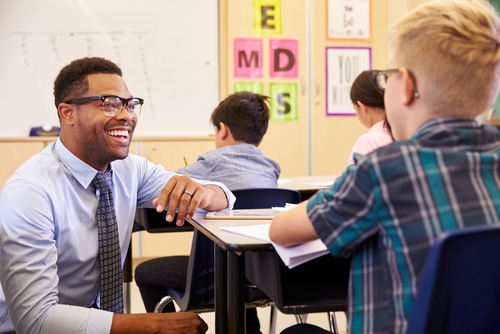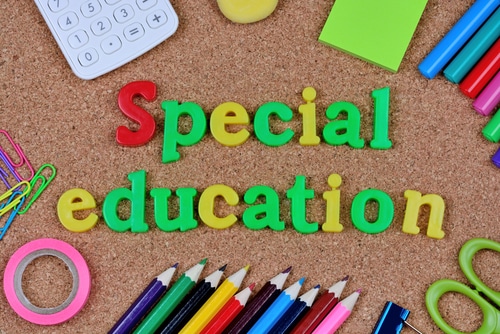Down syndrome is a very common condition. In the course of your career, especially if you teach special education, it is very likely that you will have the opportunity to teach a student with Down syndrome. Every person with Down syndrome is different and has their own personality and interests.

Source: Public Domain Pictures
What is Down Syndrome?
Down syndrome, or trisomy 21, is a replication of the 21st chromosome. Basically, that means it’s a genetic condition, it is life-long, and there is no cure. There are a lot of myths floating around about Down syndrome, so take the time to do a little reading. Down syndrome causes developmental delays and cognitive disability. There are also many wonderful strengths of people with Down syndrome! Many interventions and teaching methods are especially helpful for students with Down syndrome.
Important disclaimer: every child is different, every child with Down syndrome is different, and there is no intervention that will work for every kid, every time. This is a starting point, but make sure to talk with your team to figure out solutions together.
Use Visuals
The brains of people with Down syndrome are especially good at processing visual information. Their brains are not wired to remember spoken directions as well, so visuals use the student’s strengths! “Visuals” just means using pictures of some kind, usually to replace or supplement auditory directions. For example, you might show pictures of the child’s morning routine on a laminated sheet, like this:
| Say Bye to Mom |  |
| Hang Up Backpack |  |
| Get out Pencil and Notebook |  |
| Start Morning Work |  |
Sources (from top to bottom): Wikimedia Commons, Wikispaces, Wikispaces, The Kindergarten Planner
Incorporating visuals into your explanations during lessons and when giving directions can help all your students understand better, but often a student with Down syndrome needs this intervention to understand.
Have a Predictable Routine
Structure is a big “ounce of prevention is worth a pound of cure” step. Many behavior challenges are caused by distress due to change in routine, a poorly explained routine, or a routine that is unpredictable day to day. Set a routine and stick to it. You may find that your student with Down syndrome may benefit from instructions being broken down into smaller steps. For instance, saying, “Everyone get supplies for art” might be too “big” of a task for your student to really know what to do or where to start. Instead, using visuals if appropriate, you could break it down into steps like this:
- Get out your pencil from your desk.
- Walk to the art center and get colored pencils and one sheet of construction paper.
- Sit back down.
Be Positive and Set High Expectations
For your student with Down syndrome, as with all your kids, focus on their strengths and what they do well. Stay positive in your language (for instance, not describing students as “problem kids” or “difficult”) — it makes a bigger difference than you think! Use the student’s IEP (Individualized Education Program) to guide interventions, both social and academic. Every child can learn. Set high expectations and provide supports to help your student with Down syndrome succeed!




